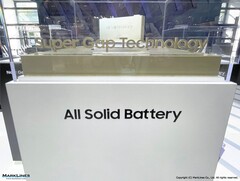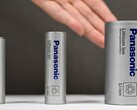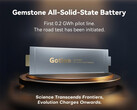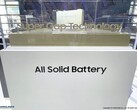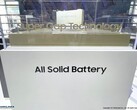Samsung will be applying the dry production method that Tesla touted as a way to slash battery costs by half, to its upcoming solid-state batteries.
The goal is to lower the biggest hurdle before mass solid-state battery adoption for electric vehicles, their manufacturing costs, as Samsung aims to launch them in 2027.
Coincidentally, that is when both Toyota and the world's largest battery maker CATL said they will start mass solid-state battery production, too.
If Samsung masters the dry electrode production method that Tesla is now scaling for cheaper manufacturing of the Cybertruck's 4680 batteries, it may realize cost advantages and flip the script on the Chinese juggernauts when the superior battery chemistry starts being installed in electric vehicles en masse.
Samsung's solid-state battery specs are already some of the best in the industry, hitting the technology's 500 Wh/kg energy density potential. Due to the inherent advantages of the solid-state battery technology, Samsung teased a 9-minute charging time and 600 miles on a charge from a pack with the footprint of current EV batteries.
What's even more important, though, Samsung is focusing on solid-state battery production costs, something that initially made CATL peg them for mass release no earlier than 2030. The biggest battery maker has come around since then, acknowledging how fast the field is progressing and saying that its own solid-state battery program will be ready for mass production in 2027.
Samsung is banking on two breakthrough production methods to lower its solid-state battery costs. The first is roll pressing, a procedure that doesn't require cumbersome sealing of the cell with the so-called Warm Istactic Press technique prior to applying 600 MPa high-temperature pressure underwater to fuse the electrode and electrolyte materials into a solid.
Now Samsung has detailed a fiberization process that it is bringing not only to its pilot solid-state battery line production, but also to its conventional batteries in order to make them much cheaper to produce.
Samsung pegs the binder as the chief difference between the more energy-efficient dry electrode method, and the common wet production that includes coating with the use of toxic solvents, and baking in huge furnaces to dry up afterward.
Samsung's Teflon binder is calculated to stretch under the force and pressure of the roll pressing method, forming a "layer that supports the conductive material and the active material." The resulting separation film is thus stronger and evenly distributed, preventing the electrodes and solid electrolyte from coming in direct contact, while still allowing the free flow of charge between them.
Tesla is doing something similar with its dry-cathode battery production method, but has yet to manufacture such cells at scale to replace the second generation 4680 battery with 15% higher energy density that it uses in the Cybertruck on the cheap.




